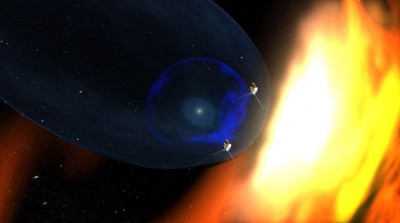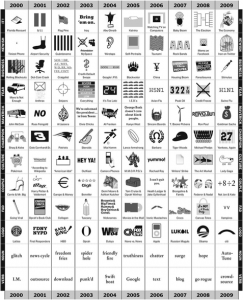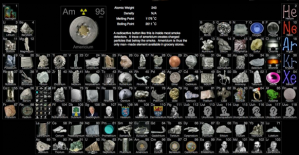
The Voyager spacecraft, launched in 1977, are still going and making new discoveries. They are after all the man-made objects that are furthest away from the center of the solar system, beyond the orbit of Pluto, and are now approaching interstellar space.
Where does the solar system end and interstellar space begin? Well, the Sun gives off light, but it also emits a plasma of charged particles (protons and electrons typically) that’s called the solar wind. These charged particles are launched from the Sun pretty fast, but as they get to the edge of the solar system they start to slow down, because the solar system is moving through a magnetic cloud, and, as we all know, charged particles are affected by magnetic fields.
The solar wind, assisted by the Sun’s magnetic field, pushes against the interstellar magnetic cloud, creating a bubble, called the heliosphere (helio=sun, sphere=sphere) that is pretty much the edge of the solar system.
Both Voyager spacecraft are approaching the heliosphere, and we’ve recently discovered that as the solar system moves through the interstellar magnetic cloud, the heliosphere is pushing against the cloud and the cloud is pushing back quite a bit. As a result, the heliosphere is shaped like the bow wave of water around a speeding boat.
It is difficult not to personify these two lonely spacecraft as the get further and further away from home, with no way to get back, but sending signals that tell of their discoveries and ensure their immortality.




